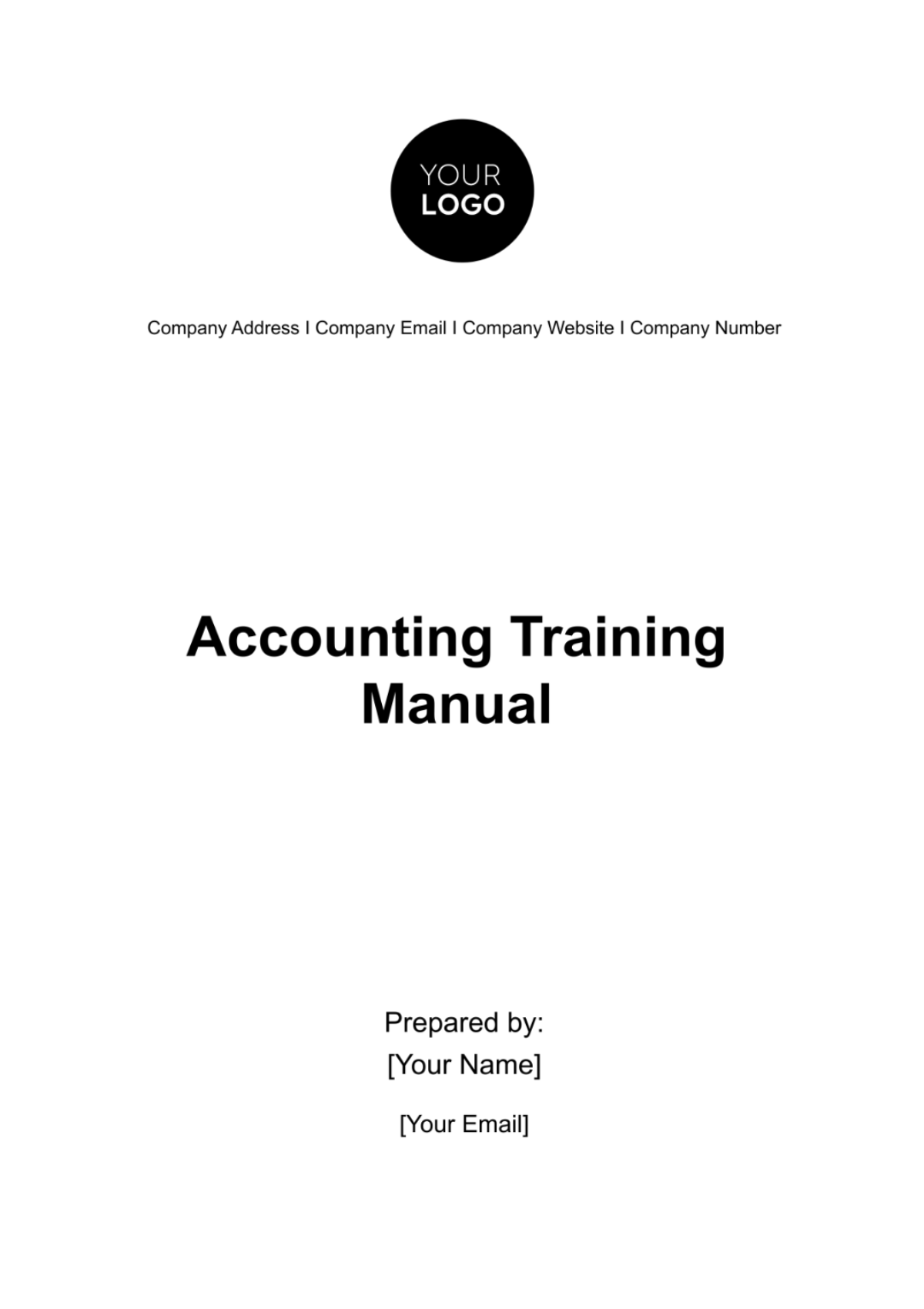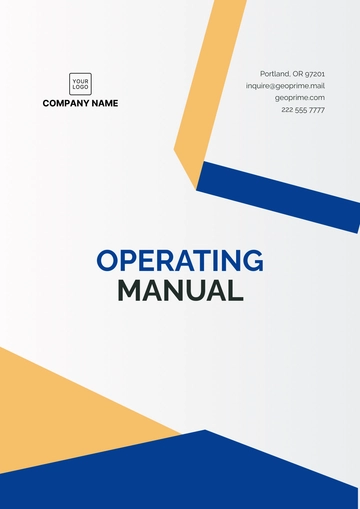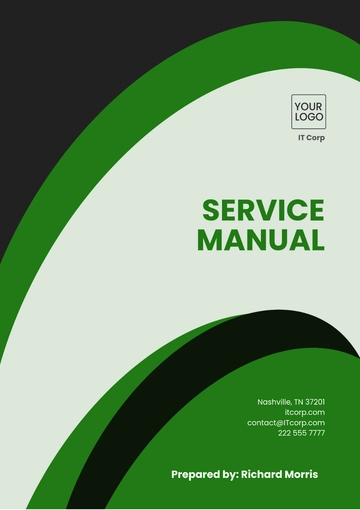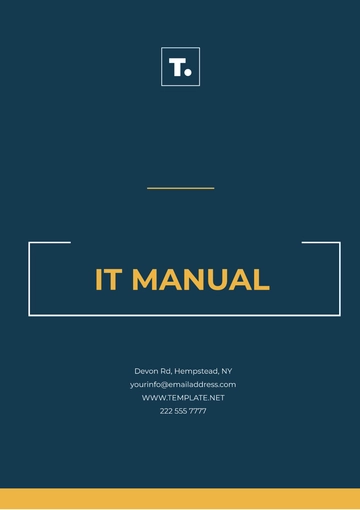Free Accounting Training Manual

TABLE OF CONTENTS
Introduction...............................................................................................................3
Double Entry System................................................................................................4
The Accounting Cycle...............................................................................................5
Financial Statements.................................................................................................6
Managing Receivables..............................................................................................7
Inventory Management.............................................................................................8
Asset Management and Depreciation.....................................................................9
Measurement and Evaluation of Financial Performance.......................................10
Contact and Feedback..............................................................................................11
Introduction
Accounting involves the meticulous and thorough documentation of financial transactions. It is a critical component for the efficient management and assessment of an organization's fiscal health. Mastery of fundamental accounting principles is not only beneficial but essential for the prosperity of any enterprise.
This training manual aims to provide an in-depth understanding of key accounting concepts. We will delve into the foundational accounting equation, explore the meanings and implications of terms like assets, liabilities, and equity, and examine how these elements interact to paint a comprehensive picture of a business's financial standing. Our discussion will equip you with the knowledge to effectively analyze and interpret financial information, ensuring a robust financial framework for your organization.
Double Entry System
The Double Entry System stands as the foundation of modern accounting methodology. It operates on a foundational principle that every financial transaction exerts an equal and opposite effect on at least two different accounts. This principle ensures the maintenance of equilibrium within the financial records, a critical aspect for accurate financial representation and analysis.
In the following sections, we will engage in an examination of the techniques required for the accurate categorization and recording of financial transactions within ledger accounts. Through a series of carefully selected examples, the application of the Double Entry System will be elucidated, emphasizing its significance in achieving a balanced and true representation of an organization's financial state. Furthermore, the imperative of maintaining balanced books will be highlighted, as it is central to the integrity and reliability of financial reporting.
Accompanying this discourse, a presentation is provided below to illustrate the fundamental mechanics of the Double Entry System. This table exemplifies the typical interaction of accounts in response to various financial transactions:
Transaction Type | Account Debited | Account Credited | Amount |
|---|---|---|---|
Purchase of Equipment | Equipment Account | Cash/Bank Account | $5,000 |
Each row in this table depicts a distinct transaction, indicating the accounts affected and the monetary value involved. This representation is designed to provide a clear understanding of the practical application of the Double Entry System in recording financial activities.
The Accounting Cycle
The accounting cycle is an essential process in financial reporting, providing a systematic approach to recording and managing financial transactions. This cycle is pivotal in ensuring the accuracy and integrity of a company's financial statements. Below is a detailed breakdown of each step in the accounting cycle:
Transaction Identification and Analysis: This initial step involves identifying and analyzing each financial transaction for its impact on the company's financial position. It requires a thorough understanding of the nature of the transaction and its effect on assets, liabilities, equity, revenue, and expenses.
Journal Entry Creation: Once a transaction is identified and analyzed, it is recorded in the accounting journals as either a debit or a credit. This step, known as journalizing, is crucial for maintaining an accurate chronological record of all financial transactions.
Posting to the General Ledger: After journalizing, these entries are then posted to the general ledger. The general ledger serves as a comprehensive record, summarizing and categorizing each transaction into respective accounts.
Preparing a Trial Balance: The trial balance is prepared to test the mathematical accuracy of the debits and credits after posting. This involves listing all the ledger accounts along with their respective debit or credit balances to ensure that the total debits equal total credits.
Adjustment Entries and Adjusted Trial Balance: Adjustments are made to account for accruals, deferrals, and other financial events not yet recorded. After adjustments, an adjusted trial balance is prepared, which serves as the basis for preparing financial statements.
Financial Statement Preparation: This critical step involves the creation of key financial statements, including the income statement, balance sheet, and cash flow statement. These documents provide insights into the company's financial performance and position.
Closing the Books: The final step in the accounting cycle involves closing the temporary accounts (such as revenues, expenses, and dividends) and transferring their balances to permanent accounts. This process resets the temporary accounts for the next accounting period.
Each of these steps plays a vital role in the accounting cycle, ensuring the completeness, accuracy, and reliability of a company's financial reporting. Understanding and effectively managing this cycle is fundamental for any business's accounting and financial management.
Financial Statements
Financial statements are indispensable tools for assessing the financial health of a business. They provide a detailed picture of a company's financial activities and position, playing a pivotal role in strategic decision-making, investment analysis, and stakeholder assurance. Understanding and effectively utilizing these statements is critical for financial management and planning. The four primary types of financial statements, along with sample data, are outlined below:
Balance Sheet: Presents the financial position of a company at a specific point in time. It lists assets (what the company owns), liabilities (what it owes), and shareholders' equity (the owner's claim after debts are paid).
ASSETS
Cash
$50,000
LIABILITIES
Accounts Payable
$30,000
SHAREHOLDER'S EQUITY
Common Stock
$150,000
Income Statement: Details a company’s revenues and expenses over a specific period, culminating in net income or loss. It provides insights into the company's profitability and operational efficiency.
Category
Amount
Total Revenues
$500,000
Cash Flow Statement: Tracks the flow of cash in and out of the business, categorized into operating, investing, and financing activities. It’s crucial for understanding liquidity and cash management.
Category
Amount
Net Cash from Operations
$60,000
Statement of Owner's Equity: Reflects changes in the owner's equity over a period. It includes capital injections, withdrawals, and the company's net income or loss.
Category
Amount
Opening Equity
$100,000
Each financial statement offers distinct yet interconnected insights. The balance sheet provides a snapshot of financial health at a point in time, the income statement reveals profitability over a period, the cash flow statement focuses on the liquidity aspect, and the statement of owner's equity tracks the changes in ownership value. Collectively, these statements form the foundation of financial analysis and decision-making for businesses.
Managing Receivables
Accounts receivable, representing a legally enforceable claim for payment owed by customers to a business, is a critical component of a company's current assets. Effective management of accounts receivable is vital for maintaining healthy cash flow and overall financial stability. In this section, we delve into various strategies to optimize the management of these receivables.
Accelerating Collections: This strategy focuses on reducing the time between billing and receiving payment. Techniques include offering early payment incentives, implementing more efficient invoicing processes, and employing timely follow-up procedures. For example, introducing electronic invoicing can significantly reduce the lag time between service delivery and payment receipt.
Evaluating Customer Creditworthiness: Assessing the creditworthiness of potential customers before extending credit is crucial. This involves analyzing their credit history, financial health, and payment track records. Businesses might employ scoring models or rely on credit reporting agencies to gauge the risk associated with extending credit to different customers.
Debt Management Strategies: Effective management of overdue accounts is essential. This can involve setting up clear credit policies, regularly reviewing receivables aging reports to identify delinquent accounts, and taking proactive steps such as payment reminders or negotiating payment plans. In cases where collections efforts fail, businesses may consider using collection agencies or legal action as a last resort.
Implementing Strong Credit Policies: Establishing and enforcing robust credit policies can significantly mitigate the risk of bad debt. This includes clearly defining credit terms, payment deadlines, and consequences for late payments. Consistent application of these policies is key to their effectiveness.
Leveraging Technology for Receivables Management: Utilizing advanced software and technologies can streamline the receivables process. Automated billing systems, digital payment solutions, and customer relationship management (CRM) tools can enhance efficiency, reduce errors, and provide valuable insights into customer payment behaviors.
Regular Monitoring and Reporting: Regularly reviewing accounts receivable reports and key metrics such as average collection period and accounts receivable turnover ratio helps in identifying potential issues early and taking corrective actions.
By adopting these strategies, businesses can improve their receivables management, thereby enhancing their liquidity position and minimizing the risk of bad debts. Effective receivables management not only ensures a steady inflow of cash but also contributes to the overall financial health and operational efficiency of the company.
Inventory Management
Inventory management is a multifaceted aspect of business operations, encompassing the effective control, storage, identification, and accounting of inventory. It plays a crucial role in balancing cost efficiencies with meeting customer demand. This section provides a comprehensive examination of various inventory management methodologies and their impact on business operations.
FIFO (First-In, First-Out) Method: This inventory valuation method assumes that the oldest inventory items are sold or used first. It is particularly beneficial in times of rising prices, as it results in lower cost of goods sold (COGS) and higher reported profits. For example, if a company purchases goods at increasing prices, the cost recorded for the sale of inventory would be based on the oldest, less expensive items.
LIFO (Last-In, First-Out) Method: Contrary to FIFO, LIFO assumes that the most recently acquired items are the first to be sold. This method can be advantageous for tax purposes in an inflationary environment, as it typically results in a higher COGS and lower reported profits, reducing taxable income. For instance, in a scenario of rising prices, the cost of goods sold reflects the higher cost of the more recently purchased inventory.
Adequate Inventory Control: Effective inventory control is essential for maintaining the delicate balance between too much and too little inventory. Adequate control mechanisms involve regular stock reviews, demand forecasting, and implementing reorder point formulas. This ensures that inventory levels are sufficient to meet customer demands without incurring excessive holding costs.
Interplay with Cash Flow and Profitability: Inventory management has a direct impact on cash flow and profitability. Excessive inventory ties up capital and increases holding costs, whereas insufficient inventory can lead to stock outs and lost sales. Thus, optimizing inventory levels is crucial for maintaining liquidity and maximizing profitability.
Inventory Identification Techniques: Modern inventory systems use various identification techniques like barcoding and RFID (Radio-Frequency Identification) to track inventory levels accurately. These technologies aid in real-time tracking, reducing errors, and improving efficiency in inventory management.
Use of Technology in Inventory Management: The integration of technology such as inventory management software and ERP (Enterprise Resource Planning) systems can greatly enhance inventory control. These tools offer real-time data, analytics, and automation capabilities that streamline inventory management processes.
By mastering these inventory management methods and practices, businesses can significantly improve their operational efficiency, reduce costs, and enhance profitability. Effective inventory management not only supports smooth business operations but also provides a competitive edge in the market.
Asset Management and Depreciation
Asset management and depreciation are crucial components of a company's financial strategy, directly influencing its fiscal health and performance. Effective management of assets ensures optimal utilization and accurate reflection of their value on the company's financial statements. This section provides an extensive overview of asset categories, management policies, and the intricacies of depreciation.
Categories of Assets: Assets are broadly classified into two categories:
Current Assets: These are assets that are expected to be converted into cash within [one year]. Examples include cash, accounts receivable, and inventory.
Non-Current Assets: These are long-term resources, expected to provide value for more than one year. This category includes fixed assets like property, plant, and equipment (PP&E), as well as intangible assets such as patents and trademarks.
Asset Management Policies: Effective asset management involves policies and procedures that govern the acquisition, use, and disposal of assets. This includes performing regular asset audits, maintaining accurate records, and ensuring proper maintenance of physical assets. Asset management also involves strategic decisions about leasing versus purchasing and asset financing.
Concept and Computation of Depreciation: Depreciation is the systematic allocation of the cost of a tangible asset over its useful life. It reflects the asset's consumption, wear and tear, or obsolescence. Several methods can be used to calculate depreciation, each affecting the financial statements differently:
Straight-Line Method: This method spreads the cost evenly over the asset's useful life. For example, a machine worth [$10,000] with a [5-year] life and a salvage value of [$2,000] would be depreciated at [$1,600 per year].
Declining Balance Method: A form of accelerated depreciation, it applies a higher depreciation rate in the earlier years of the asset's life.
Units of Production Method: This links depreciation to the asset’s usage or production levels, offering a more accurate reflection of its wear and tear.
Impact on Financial Statements: Depreciation affects both the income statement and the balance sheet. It reduces net income on the income statement while decreasing the asset's book value on the balance sheet. Understanding how depreciation impacts financial statements is vital for accurately assessing a company’s profitability and asset value.
Tax Implications: Depreciation also has significant tax implications. It is a non-cash expense that reduces taxable income, thus impacting a company's tax liability.
By gaining a thorough understanding of asset management and depreciation, businesses can make more informed decisions about their assets, optimize their utilization, and accurately report their value. This knowledge is essential for strategic planning, budgeting, and enhancing overall financial performance.
Measurement and Evaluation of Financial Performance
Financial ratios are pivotal tools in measuring and evaluating a company's financial performance. They provide insights into various aspects of a company's operations, financial health, and future prospects. Understanding these ratios and their implications is crucial for effective financial analysis and decision-making. We will explore the different types of financial ratios: liquidity, profitability, leverage, efficiency, and market ratios, their specific measures, and their application.
Liquidity Ratios: These ratios assess a company's ability to meet its short-term obligations. They are crucial for evaluating the financial stability of a business in the short term. Current Ratio measures a company's ability to pay short-term obligations with its current assets. While Quick Ratio, similar to the current ratio but excludes inventory from current assets.
Profitability Ratios: These ratios indicate how well a company can generate profits from its operations. The Net Profit Margin shows the percentage of revenue that is profit after all expenses. Return on Assets (ROA) measures how efficiently a company uses its assets to generate profit.
Leverage Ratios: These ratios assess a company’s debt levels and its ability to meet these obligations. Debt to Equity Ratio systemically compares the company’s total liabilities to its shareholder equity.
Efficiency Ratios: These ratios measure how effectively a company uses its resources.
Market Ratios: These ratios are used to analyze a company’s stock market performance. Earnings Per Share (EPS) indicates the profitability on a per-share basis. Price to Earnings Ratio (P/E) compares the company's current share price to its earnings per share.
Through the use of these financial ratios, stakeholders can gain a comprehensive understanding of a company's financial position and performance. They serve as fundamental tools in investment analysis, credit assessment, and strategic decision-making. By applying these ratios to real data, businesses and investors can evaluate financial health, operational efficiency, and future profitability.
Contact and Feedback
You can reach out to us at [Your Company Number] or [Your Company Email] with your suggestions, questions, or comments. Whether it's feedback about the content, requests for additional topics, or general inquiries, we are eager to hear from you. We highly value your insights and experiences.
We look forward to being an integral part of your accounting education and are committed to providing the support and resources you need to succeed. Your progress and satisfaction are our top priorities, and we are here to assist you in every aspect of your learning journey.
- 100% Customizable, free editor
- Access 1 Million+ Templates, photo’s & graphics
- Download or share as a template
- Click and replace photos, graphics, text, backgrounds
- Resize, crop, AI write & more
- Access advanced editor
Unlock financial mastery with Template.net's Accounting Training Manual Template. This editable and customizable toolkit offers top-notch quality content editable in our Ai Editor Tool. Hand-crafted by experts, this tool simplifies accounting learning by providing clear instructions and comprehensive materials for training. Navigate financial complexity effortlessly today with this informative guide at Template.net.





























